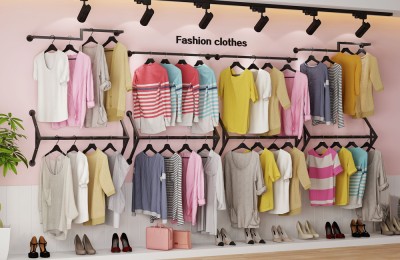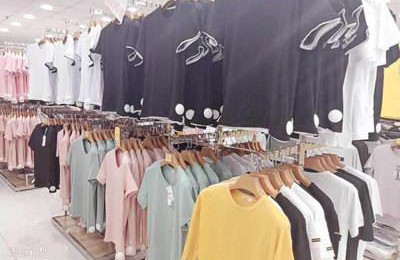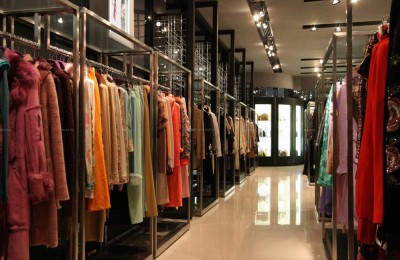Last month, textile friends were complaining: There are too few orders now, too much inventory in the market, and it is too difficult to make textiles! Life is tight!
In the past few days, the editor’s circle of friends has been complaining again: raw materials have skyrocketed, cloth prices are difficult to rise, profits are too low, and it is even more difficult to make textiles!
In July, the ups and downs of the plot made textile people feel emotional! First, at the G20 summit, the heads of state of China and the United States reached an agreement on whether to impose additional tariffs. The United States stated that it would not impose new tariffs on Chinese exports. Then the raw material market caught wind of it and took the lead, and the editor instantly found the feeling of “flying freely in your heart”.
PTA futures surged strongly, rising by the daily limit for two consecutive days. The prices of bulk textile raw materials such as polyester filament, nylon filament, and viscose staple fiber also increased to varying degrees. The textile market It can be said that the upstream is very! hot! Noisy! (This situation reminds me that in July last year, the price of PTA futures rose sharply and became a “ten thousand yuan household”. Then it suddenly turned sharply and the price dropped all the way! I wonder if history will repeat itself?!)
Nowadays, many market participants have begun to turn their attention to the weaving market. After all, the rational transmission of the entire industry chain should be: end customers place orders → traders receive orders and find sources of goods → weaving factories ship goods and remove inventory → raw material factories sell Silk drop stock. If every link can be released smoothly, then market supply and demand are expected to reach a balanced state.
The ideal is beautiful, but the reality is backbone! The increase in raw material prices coupled with the release of macroeconomic benefits has boosted market confidence to a certain extent, stimulated traders’ stocking mentality, and driven the sale of conventional products on the market. However, the total of these benefits does not seem to be able to offset them. The market’s “inventory woe”!
In particular, the textile factories that had previously doubled their production in Anhui, Northern Jiangsu and other places were under great pressure. Recently, I chatted with several textile bosses working in overseas factories, and I also heard a lot of entanglement and helplessness from their mouths!
Gray fabrics do not dare to rise, and raw materials continue to rise, so we can only take a holiday!
Overcapacity has been a common problem recently. The main reason is that in recent years, more and more external factories have been set up, the number of machines has doubled, and the number of products produced Mainly conventional varieties such as polyester taffeta, pongee, Oxford cloth, chiffon and other mid-to-low-end products have led to a state of overcapacity in the market.
Since the Qingming Festival, the textile market has entered a sluggish cycle. The off-season of the market has come earlier than in previous years, which has resulted in unsatisfactory orders for some manufacturers with factories in other places. , some even haven’t received orders for about 2 months and have been in a state of exhausted inventory.
In July, although the market was positive, terminal orders were still slow. “We used to supply large customers, but now we are looking for more and more suppliers to large customers, and the cake is getting smaller and smaller, so our order situation this year is relatively poor.” We have 600 water-jet looms in northern Jiangsu. Mr. Shen of Mr. Shen said, “Currently we are making conventional products, and the inventory is very high. The price of raw materials has risen too fast. We dare not increase the price of gray fabrics. There is not much profit in the first place. Now the production profit is even lower. Maybe we will still do it in the future. Take the vacation as planned.”
The factory currently has 170 looms in Anhui The person in charge also said that the current overall market environment is not good and the global economic performance is not optimistic. This cannot be restored solely by the improvement of Sino-US relations. There is currently too much cloth on the market. Although raw materials are rising again, the pace of orders cannot keep up, cloth prices cannot rise, and there is still a risk that inventory will continue to rise.
Currently, for the bosses who set up factories in other places, destocking may be more important than raising prices. The first priority is to liquidate the original inventory, withdraw funds, and reduce operating pressure. , if raw materials continue to rise but orders are not followed up enough, the market will repeat the crazy and cruel market situation in the third quarter of last year – weaving manufacturers will stop chasing raw materials, and raw materials will rise and fall sharply. Therefore, as long as the supply and demand problem is not resolved, the resistance for the gray fabric market to follow the recovery of the raw material market will still be relatively large.
In the next 1-2 years, the oversupply situation of conventional products will be difficult to change!
The market situation this year has been shocking. Many market participants are speculating that perhaps a group of companies with weak foundations will collapse under the torture of this market situation. Next, the market supply and demand pattern will improve, but what about the facts?
The editor once visited Anhui Langxi Industrial Park in May. The scale of local water-jet looms has reached the level of 15,000-18,000 units, and is expected to increase in the next two years. It reached a peak of 30,000 units during the year. In addition, according to incomplete statistics, the production capacity of water-jet looms transferred to northern Jiangsu, Anhui, Hubei, Henan and other places in the past two years has exceeded 200,000 units, far exceeding the number of water-jet looms eliminated by traditional textile clusters in the Yangtze River Delta region , and I heard that there are still a large number of factories under construction in Jiangxi, Hubei and other places.
Not only that, the textile machinery market situation report for the first quarter of 2019 released by the China Textile Machinery Association shows that:
Among the weaving machinery, water-jet looms maintained the high growth trend last year, and the sales of rapier looms continued to decline; among the knitting machinery, the sales of circular weft looms increased steadily, and the sales volume increased steadily. The overall market situation of knitting machines has declined; printing, dyeing and finishing machinery has maintained the development trend of last year; sales of chemical fiber machinery have declined slightly; and the nonwoven machinery market has not picked up significantly.
It can be seen that in the next 1-2 years, the total number of domestic water-jet looms will still be on the rise, and the oversupply of conventional products will be difficult to improve in the short term.
Previously many market participants predicted that if the outcome of Sino-US trade negotiations after the G20 summit would be good, then It will bring substantial benefits to the market, but the fact is that the good news that the United States will no longer impose new tariffs on Chinese products has arrived, but the originally expected large-volume orders have not yet landed.
Although the market is partially recovering, compared with the high inventory in the early stage, it is still “a drop in the bucket”. Weaving companies are worried It has not reversed as expected. At least in the short term, many textile bosses still have a headache when looking at the piles of inventory in the warehouse: flour is more expensive than bread, and the order has not arrived, where will we go?
Written at the end: On July 3, the style of the raw material market changed suddenly! Polyester products, which had been rising strongly for two weeks, have begun to “stop”, which proves a sentence: Any behavior that increases prices without taking the improvement of terminal demand as the premise is a hooligan!
</p







